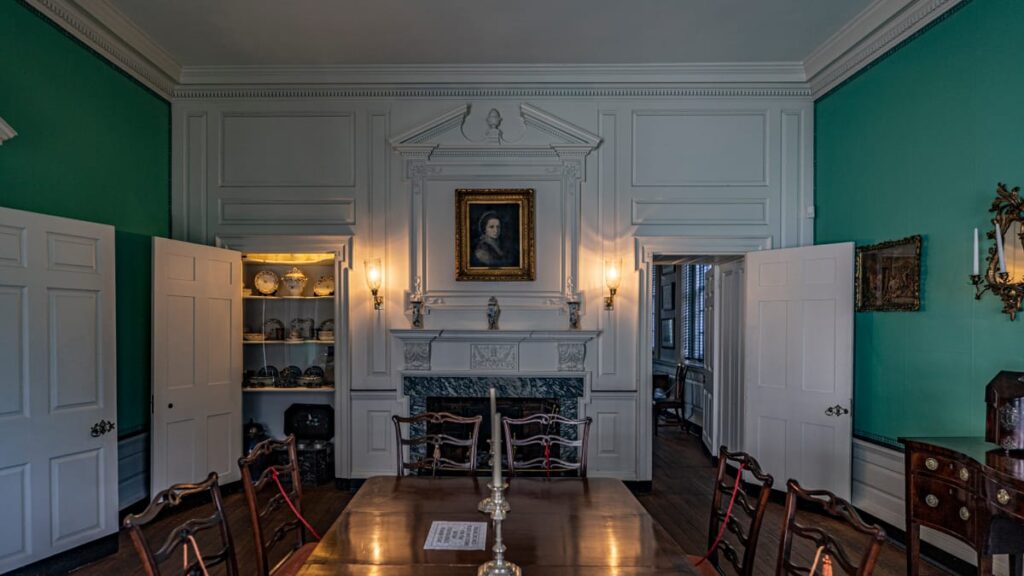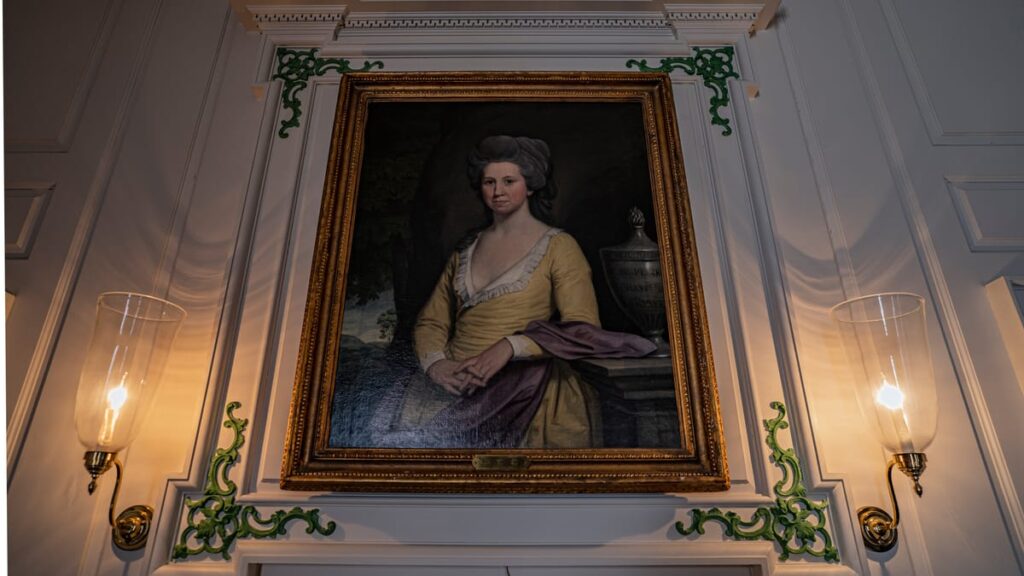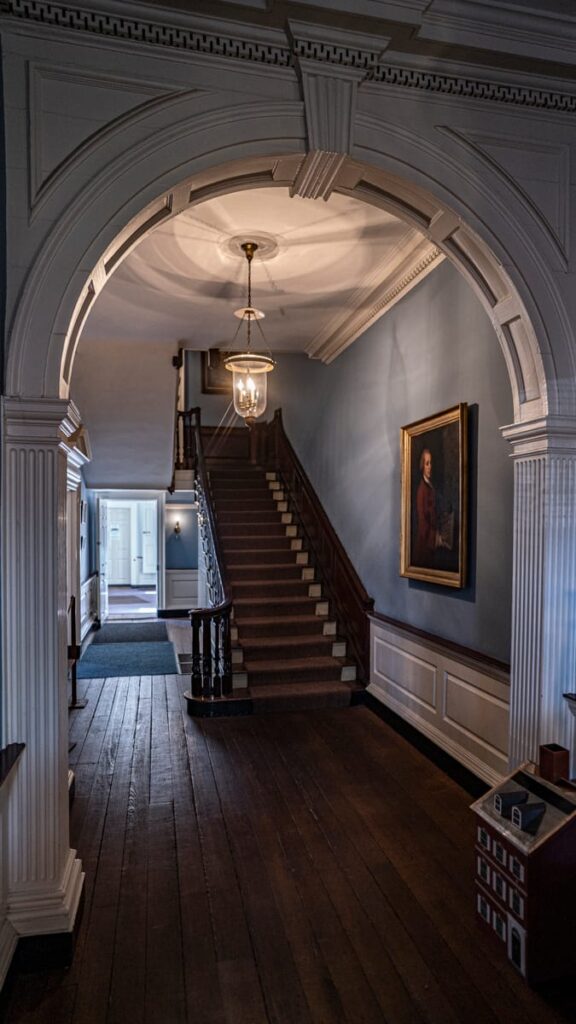
Powel House
Apparitions of colonial soldiers and socialites keep a classy party going in this historic home
Paranormal Claims at
Powel House
- The apparition of Benedict Arnold’s wife Peggy has been seen
- Cold spots have been encountered
- Phantom footsteps have been heard in certain areas
- The specters of continental soldiers have been spotted around the home
Prestigious History of Powel House
Just a few blocks from Independence Hall, in one of Philadelphia’s most historic neighborhoods, stands a purportedly haunted colonial-era home. Powel House blends right into a long row of red brick row houses, but still manages to stand out from the crowd.


Once home to famous socialites of 1700s Philadelphia, Powel House is now open as a historic museum.
Some tourists even say there’s more to find at the museum than just exhibits, with ghostly encounters being a common occurrence in the home.
Timeline of Powel House's History
Swipe or use timeline points to see Powel House through the years

1765
Despite its name, a man named Charles Stedman built Powel House. A successful merchant in the mid-1700s, Stedman completed his stately row house in 1765. Just a few years later, he would part with the newly built home when Samuel Powel and his wife, Elizabeth, purchased the home in 1769.
The Powels quickly went to work redesigning it. In a few short years, the relatively plain home had been transformed by the Powels, with ornate rooms and decor that made it perfect for parties.

1775
Samuel and Elizabeth soon became known around Philadelphia as well-connected socialites. Elizabeth often hosted grand dinner parties out of the home, and the couple came to make friends with the likes of Ben Franklin, John Adams, and the Washingtons. Samuel became Mayor of Philadelphia in 1775 and became a well-known figure during the beginnings of the Revolutionary War.
While Congress drafted the Declaration of Independence in the city, the founding fathers often wound down their days at Powel House parties.

1793
Samuel Powel died in 1793 of yellow fever, and Elizabeth lived as a widow at Powel House until 1798, when she sold it to US Senator Wiliam Bingham. Bingham became the first of many different owners over the 19th century.
Through the 1800s, the city of Philadelphia rapidly developed around the home. Many feared the home’s history would be completely forgotten. It wouldn’t be long before Powel House reached a point of no return.

1931
In the early 1900s, Powel House was repurposed into commercial space. Historic pieces and sometimes whole rooms were sold off as the building wasted away. By 1931, it was almost demolished for a parking lot. Luckily, Powel House was saved by the Philadelphia Society for the Preservation of Landmarks.
It has since been restored and opened as a museum. Though its history of colonial soirées is far in the past, some say ghosts are still socializing in the Powel House museum.
Peggy Shippen’s Paranormal Presence
One well-known phantom around the home is that of Peggy Shippen Arnold, wife of Benedict Arnold. Before Benedict’s little snafu with treason, Peggy often went to Elizabeth’s parties.
Now, she is said to haunt the drawing room, appearing as an apparition. Her ghostly figure is said to wear a lavender and beige ball gown.


Peggy is also reportedly seen drifting around the drawing room, as if making rounds at a get together. At other points, Peggy’s specter has been seen stamping her foot on the floor, and then fading.
Some say she doesn’t want to be seen, but no one truly knows why she does it. Perhaps she is annoyed she can’t find her husband, because he’s too busy haunting Independence Hall.

Shadowy Soldiers at the Powel Party
Along with the figure of Peggy Arnold, visitors have reported spectral soldiers. The shadowy figures of Continental Army troops have been spotted throughout the house, as well as outside of it. Sometimes, these ghostly soldiers are seen outside heading to the front door, only to pass right through it.
Others have spotted similar spirits descending the main staircase of Powell House. Witnesses say the soldiers are dressed formally, as if they are attending a party.

Listen for This Home’s Ghostly Footsteps
Other activity of unknown origin has been encountered at Powel House. Cold spots are said to be common all through the house. In other areas, visitors have heard footsteps on the floors above them.
This activity is most often noted in the basement, with the footsteps coming from the first floor. Could these be the footfalls of Peggy Arnold trotting around the drawing room and stamping her foot?
Powel House: Philadelphia’s
Most Mysterious Museum?
Today, the Powel House remains busy as a popular local museum. Though its ghost stories are well-known these days, you won’t find many ghost-related programs offered at the house. However, you can always pay a visit during their regular tour hours.

Powel House’s historic tours offer an ideal opportunity to see the restored home up close. Perhaps you’ll even see the specter of Peggy Arnold in the drawing room.
As to why she stomps her foot and disappears, you’ll have to draw your own conclusions.


